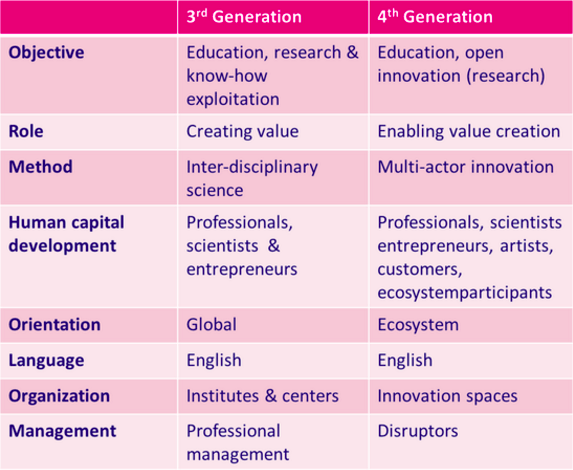
Tomorrow is good.
 In a weekly column, alternately written by Lucien Engelen, Maarten Steinbuch, Carlo van de Weijer and Daan Kersten, E52 tries to find out what the future will look like. All four contributors are – in addition to their ‘normal’ groundbreaking work – linked to the SingularityU The Netherlands, the organization that focuses on spreading knowledge about technologies that can provide solutions to the problems of our time. This Sunday, it’s Maarten Steinbuch‘s turn.
In a weekly column, alternately written by Lucien Engelen, Maarten Steinbuch, Carlo van de Weijer and Daan Kersten, E52 tries to find out what the future will look like. All four contributors are – in addition to their ‘normal’ groundbreaking work – linked to the SingularityU The Netherlands, the organization that focuses on spreading knowledge about technologies that can provide solutions to the problems of our time. This Sunday, it’s Maarten Steinbuch‘s turn.
By Maarten Steinbuch
The technological developments are rapidly progressing and have impact in all aspects of our lives: energy, mobility, health, security, working, living etc. We also might call this the digital society, with internet of everything as driving principle. The speed of change is accelerating, and is driven by the exponential growth of computing power dictated by the Law of Moore.
The question I want to put forward is: how are we going to speed up the research at our universities? How do we stay connected and how can we follow the accelerations of innovations?
The answer might be to define a next generation of university: a networked university, with open channels to industrial, entrepreneurial, societal engaged individuals. Where innovation is not done in isolation, but in co-operation, with customer participation. An open innovation space.
Let me first describe the first generations of universities to put the envisioned direction into perspective.
1st, 2nd and 3rd Generation of University
The First generation of university was focused on education, and the first of this kind is the University of Bologna (1088).
Then the second generation introduced scientific research as the additional key goal. The example of this type is the Humboldt University Berlin.
The (current) third generation of university was initiated by Cambridge University. The third added element was that of valorisation. This in fact means the role of initiating market innovations, helping start ups and bridging the gap with industrial applications by bringing the ideas outside the university.
The table below shows nicely the typical ingredients of the three types of university systems.
If we observe how our current system works, the third generation of university is still not implemented everywhere, but we see a strong drive, also in the Netherlands, to work more inter-disciplinary, focus also on entrepreneurs and think about how to create value. Nevertheless, our research processes themselves are still very linear: we do research, starting with a thorough survey of literature, then innovate, then write a paper, submit it, after 3 months or so get reviewer feedback, modify, send again, and after one or two iterations we hope to have it published say one year later.
4th Generation of University
As stated at the start of this text, the world around us is changing fast, and linear thinking and linear processes are replaced by exponential growth, using the power of platforms (i.e. networks), and circular processes. So I observe a divergence between the pace of university research and its environment, although I know of course that doing research with high quality requires time and dedication. Although I respect these latter values, I would like to propose the 4th Generation of University, with, on top of the regular primary educational tasks, the following key ingredients:
- the university becomes a dynamic open innovation space,
- part time positions for industrial ‘residents’, artists, and employees of governmental, societal or other knowledge institutions,
- part time employment for scientists in positions outside the university,
- BSc and MSc student teams and PDEng and PhD participations in benchmark or worldwide games for societal challenges,
- inter-disciplinary teams with pressure cookers session, like hackatons,
- the focus of the university is partly global, but it has a strong local network and is the (co)driver of its local ecosystem,
- the role is not just creating value (3rd gen, see table above) but merely to enable the (local) network to create value, so the university is an enabler and motivator.
Some of the ingredients are already implemented in practice to a certain extend, and the list can be longer. Some examples are known from the Universities of Applied Sciences (de ‘Academische Werkplaatsen’). Another very strong example was the ‘knowledge workers’ arrangement back in 2008-2010 when employees of the industry where placed at the Dutch universities to deepen their knowledge and to give inspiration to the scientists. We developed in our group hybrid power trains for commercial vehicles with the local industry! Also, at many places, people from outside have part time positions and vv. Nevertheless, in order to speed up innovation and use the capabilities of universities, this can be amplified as a new way of working. The challenge is to maintain our quality standards (partly realized via the earlier mentioned (slow) peer review process) and scientific reproducibility of the results as the main key scientific values.
The table below summarizes the ingredients of the new proposed 4th generation university, in a comparison with the 3rd gen.
Interestingly, in our Brainport region, we are very close to such a networked environment for innovation, and maybe our Eindhoven University of Technology can play a role as a trendsetter for this 4th generation university!




